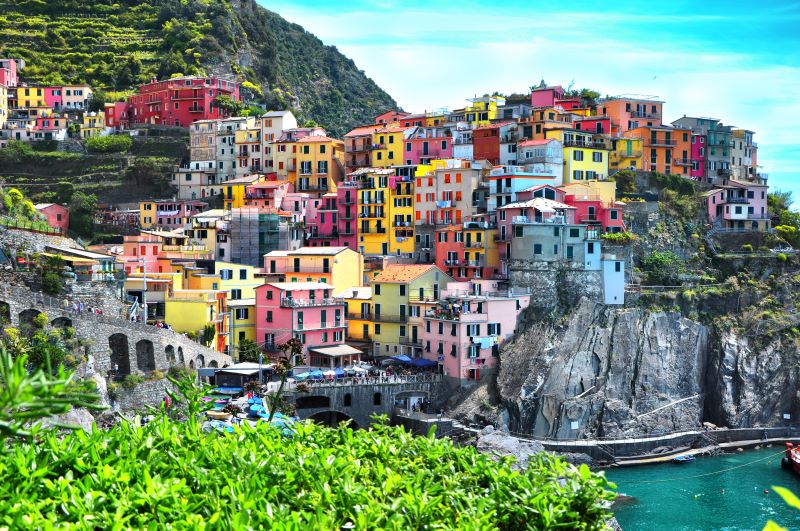
Why are some neighbourhoods more colourful than others? Is it by luck or design? And does living in a colourful neighbourhood make you happier?
My research into the history of brightly coloured houses in Bristol for my latest woven textile collection led me on a journey around the world from the comfort of my sofa, where I discovered some seriously eye-popping colour and equally colourful facts. Come and discover my new favourite places on earth, without clocking up the air miles.
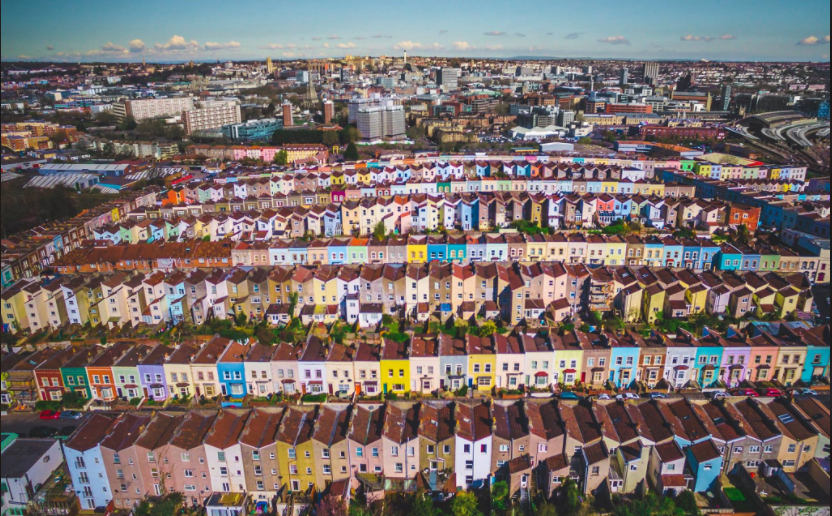
Photo: Josh Perrett
For obvious reasons, I’ll start with my adopted home City of Bristol. It’s hardly a surprise that Bristol is considered by many to be the UK’s colour capital. Between the ever increasing number of colourful houses and Europe’s largest urban graffiti festival, UPFEST, the City boasts an ever changing source of colourful inspiration to resident artists and designers alike, and amazing photogenic views for residents and visitors.
The cities eclectic mix of creative homeowners is one of the reasons why the trend for painting houses in such bright contrasting colours has snowballed. I’ve managed to date one of the first coloured house back to 1966, and if you know otherwise I’d love to hear from you. This was the year that Bristol’s ex-mayor and architect George Ferguson painted his home, and it was nothing more than a way to brighten up the ugly grey render of his terrace property. Research by Architects Stride Treglown shows that residents feel a stronger sense of community and local pride in the streets where there are lots of painted houses, and while this will be based on more factors than the colour you paint your home, it certainly plays a role. There’s a lot more on the Bristol story here.

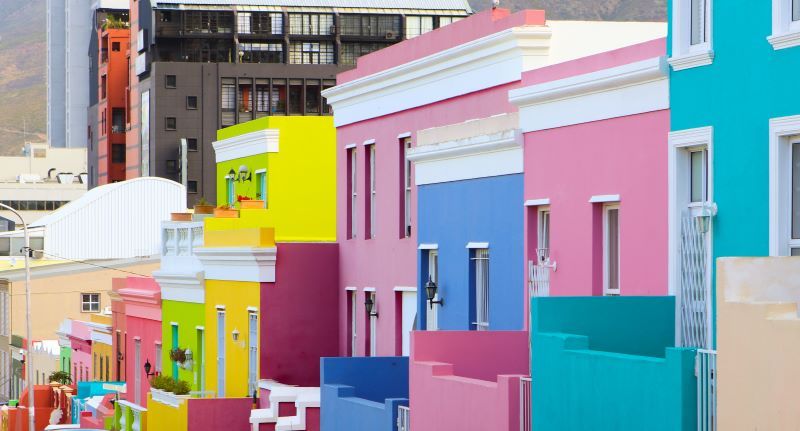
Photo: Tatyana Soares (Shutterstock)
Bo Kaap, Cape Town, South Africa is my next destination and it’s clear to see why a colour lover like me would be attracted to this neighbourhood. Formally known as the Malay Quater, the white wash houses were leased to immigrant slaves. As slavery was abolished, the houses were bought by their occupants who expressed their new freedom and happiness in the bright colours they repainted their homes. Interestingly, many of the inhabitants were craft makers, and like Bristol, we see a link between creative communities and colourful neighbourhoods.
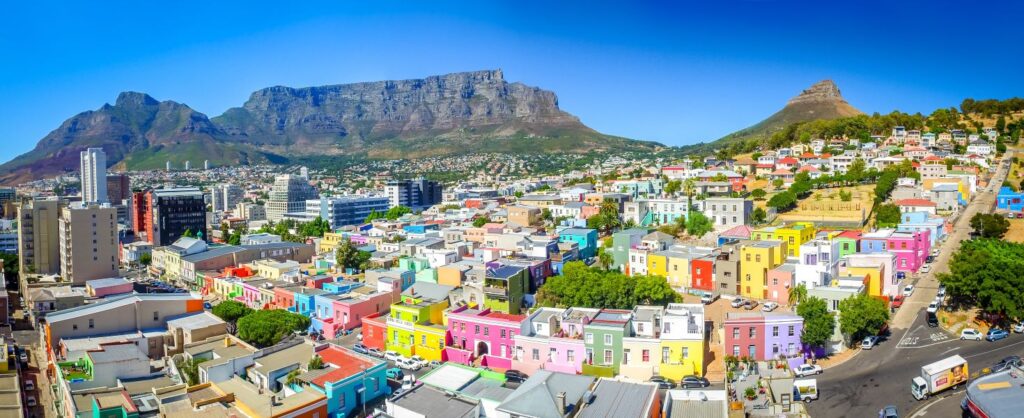
Photo: Janice Pama (Shutterstock)
Fishing and lacemaking are the primary occupations of the residents of Burano Island near Venice, once again linking craft and colourful houses. The story here is that the fronts of the houses were painted different colours so that the fishermen could find their way home in heavy fog. I’m tempted to put it out there, that it might be more to do with finding the right house after a few too many beers at the end of the day!
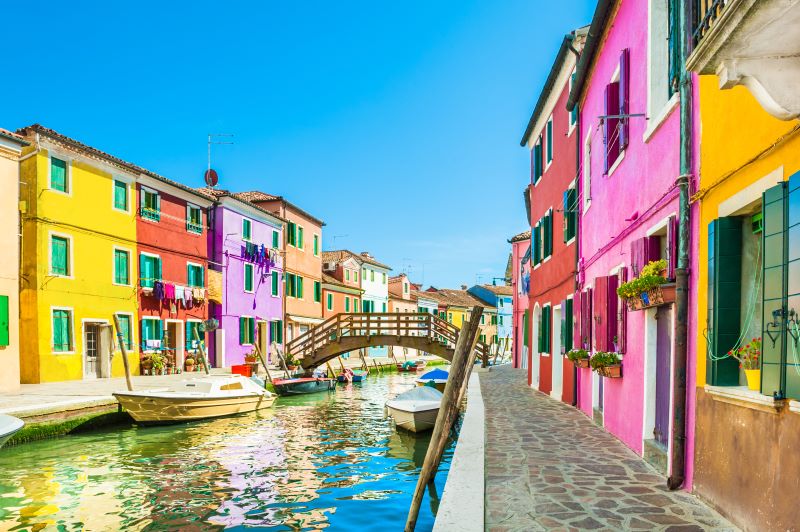
Photo: Olga Gavrilova (Shutterstock)
Heading over to the Caribbean, I next discovered Willemstrad in Curacao. The Dutch claimed this land in the 1630’s and under the intense sunlight, the lime-plastered buildings became a dazzling white. A former governor complained that this bright white caused him headaches and set out a mandate that the buildings could be painted any colour, except white, to ease his suffering. However, the plot thickened when it transpired that he was also a shareholder in the islands only paint shop. Fortunately, by this stage the residents had already embraced the charm of seeing the Dutch and Spanish style colonial architecture in the new brighter palette.
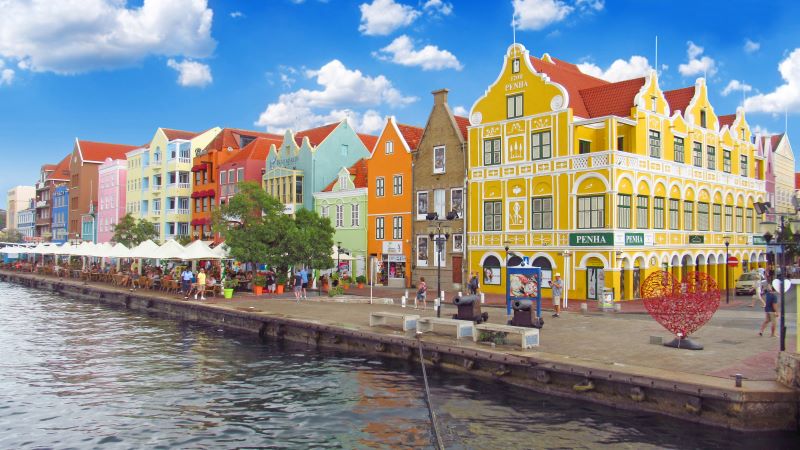
Photo:SirimasB (Shutterstock)
I just had to include Cinque Terre in this piece, as it must surely be one of the most picturesque groups of villages in the world. A victim of it’s own beauty, the area is now inundated with tourists and has recently taken measures to limit the number of visitors each year. I’m obviously writing this at a time when travel isn’t top of my agenda, and am thankful to the photographers who’ve shared their exquisite images of these places. The cliffs of Manarola in this photo show the pastel coloured houses which as the story goes, were painted by fishermen so they could spot their homes whilst out at sea.

Photo: Minoli (Shutterstock)
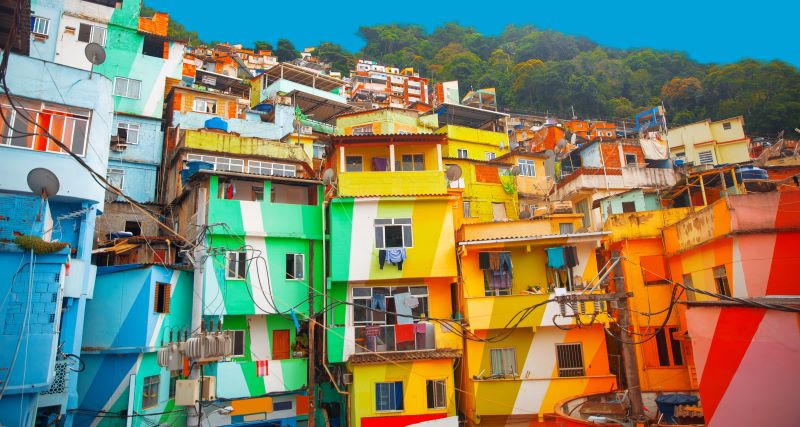
Photo: Skreidzeleu (Shutterstock)
In complete contrast I next remotely travelled to Rio de Janeiro. The favelas, (slums) are unlikely to be tourist magnets given their notorious reputation for crime and poverty, but artist intervention is helping to change the story using paint and colour. Dutch artists, Dre Urhahn and Jereon Koolhaas, started the Favela Painting Project in 2005 after travelling there to film hip-hop videos. They worked alongside former drug dealers to paint 34 houses and put Vila Cruzero on the map for something other than drug trafficking. Whilst crime hasn’t gone away, the transformation of the area had a positive effect on the locals. Residents and drug dealers have spoken about benefiting from the scheme which showed them that there is another way to live. It would be naive and over ambitious to suggest that artist led initiatives such as these can combat crime and poverty in this complex society, but what this does demonstrate is that art can start to bring about positive change. (A more recent example is Matthew Burrough’s Artist Support Pledge, which promotes a sustainable and equitable economy, but I digress. Any excuse to demonstrate the importance of artists and arts education in society, eh?).
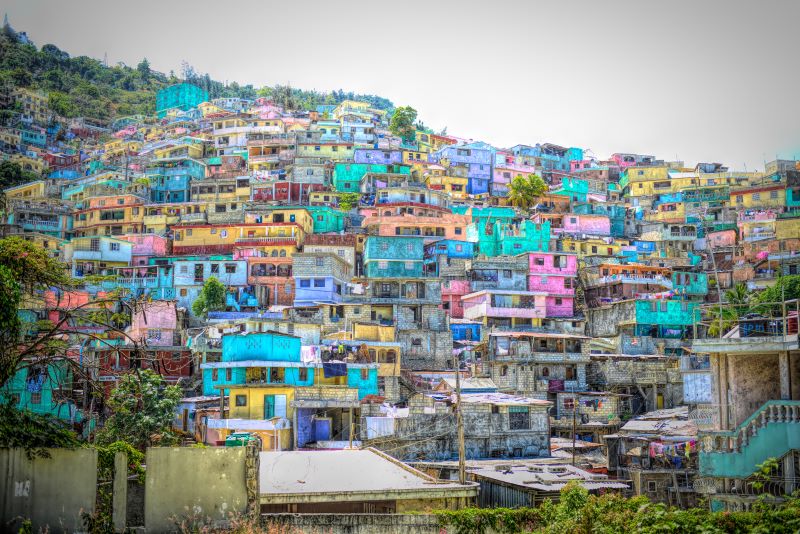
Photo: Sylie Corriveau (Shutterstock)
Another more controversial example of a slum make-over is in Port-Au-Prince in Haiti. This area was devastated in the tragic earthquake of 2010, with many residents forced to move to displacement camps. In 2013 the government rolled out a 1.4 million pound scheme to celebrate the life of Haitian artist Prefete Duffaut, and offered incentives to encourage people to relocate to the newly painted areas. The scheme has received as much criticism as praise. Whilst many of the new residents were proud of their dazzling rainbow neighbourhood, others questioned the decision to focus primarily on the mountainside which is mainly visible to the wealthy residents of Petionville. Was this as much about the views from the posh hotels as it was about helping the slums residents?
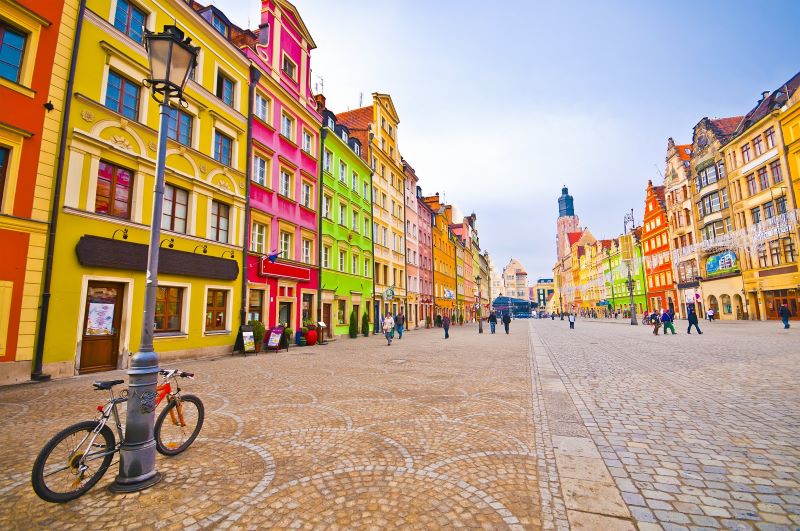
Photo: Pablo77 (Shutterstock)
At the other end of the financial spectrum, Wroclaw in Poland owes it’s distinctively colourful main square to the prosperous international trading times at the start of the 19th Century. The wealth of the merchants was displayed very openly in the bold colour choices of the buildings. These historical traditions have been upheld in subsequent renovations of the area.
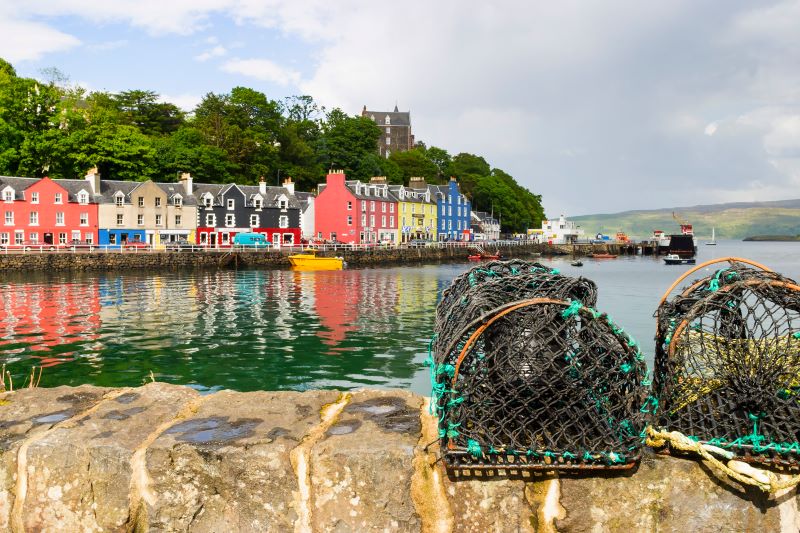
Photo:TT Photo
My final destination is one of Scotland’s most photographed views. (Yes, I know! All that nature and the coloured buildings take the top spot). Immortalised in the minds of pre-schoolers and parents alike, the row of coloured houses and hotels in Tobermory, will for many of us be synonymous with that ‘catchy’ theme tune for BBC’s Balamory. But this idyllic Scottish village isn’t without it’s own mini-melodrama. The Mishnish Hotel was the first to be painted (bright yellow) by its owner in 1961, and the rest of the waterfront followed suit to create the iconic view which makes Tobermory such a popular tourist destination. However, in 2006, it was painted black, as the yellow paint was high maintenance and faded quickly. Locals were disappointed but powerless to stop the move, but about 10 years ago it was restored to the bright yellow and all is well once more. (Thanks for the up to date photo in my inbox Paul).
So, what is it like to live in a neighbourhood surrounded by colour, and does it make you happier? It turns out that this is too big a question to answer here, but it’s something I want continue to explore and I would love to hear about your experiences and your favorite colourful places. And if you’re interested in seeing how these inspiring neighbourhoods inform my woven textile designs then do sign up to my newsletter in this link.
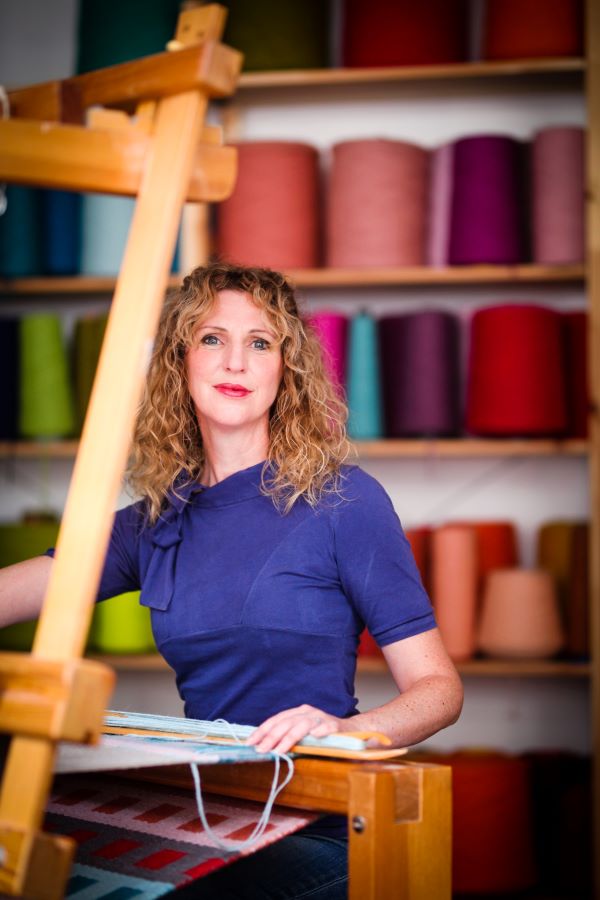
Phoro: Alice Hendy Photography
Angie Parker is a weaver, designer and colourist, based at BV Studios in Bedminster, Bristol. She trained in rug weaving in the 1990s and started her textile practice 5 years ago. Her latest collection of handwoven designs and small batch produced textiles will be launched in October 2020. Subscribers to her newsletter will be the first to see the finished designs and will access the early bird pre-order special offers. Sign up here to keep in the loop.
